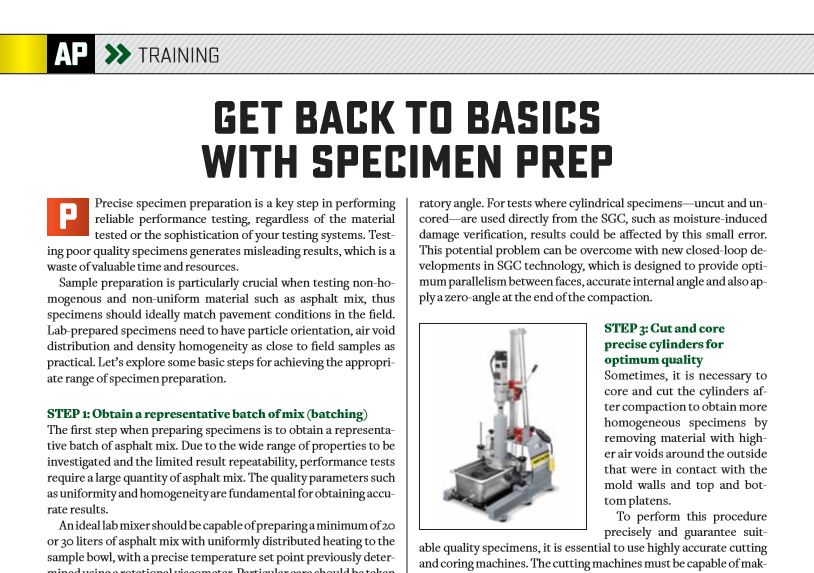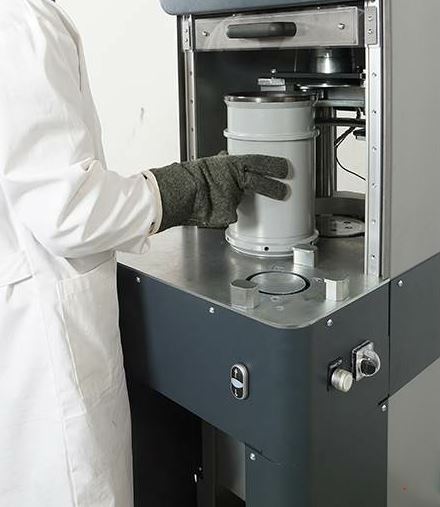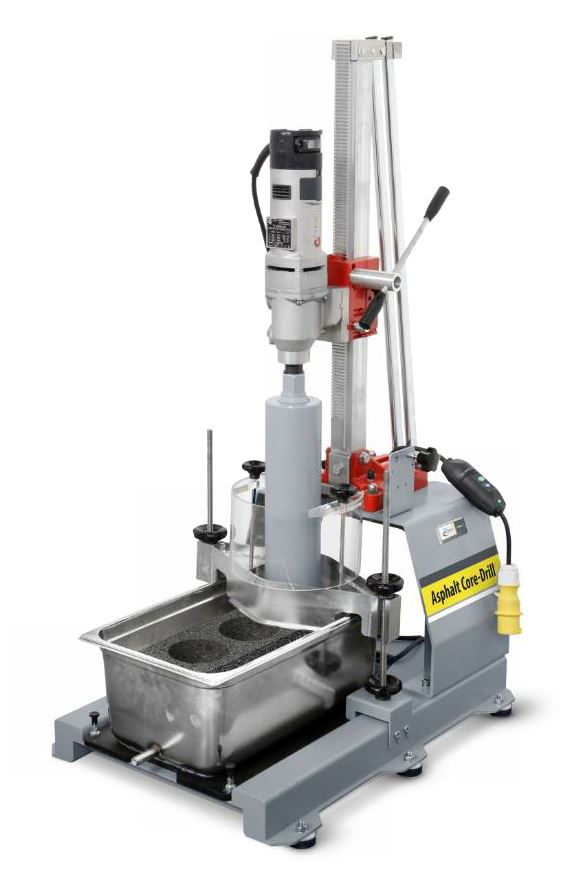Get Back to Basics with Asphalt Specimen Prep
BY IPC Global

Precise specimen preparation is a key step in performing reliable performance testing, regardless of the material tested or the sophistication of your testing systems. Testing poor quality specimens generates misleading results, which is a waste of valuable time and resources.
Sample preparation is particularly crucial when testing non-homogenous and non-uniform material such as asphalt mix, thus specimens should ideally match pavement conditions in the field. Lab-prepared specimens need to have particle orientation, air void distribution and density homogeneity as close to field samples as practical. Let’s explore some basic steps for achieving the appropriate range of specimen preparation.
Step 1: Obtain a representative batch of mix (batching)

To obtain homogeneously compacted samples, IPC Global offers a range of gyratory compactors that incorporates Electromechanical Servoactuation and patented Orbital gyratory motion system.
The first step when preparing specimens is to obtain a representative batch of asphalt mix. Due to the wide range of properties to be investigated and the limited result repeatability, performance tests require a large quantity of asphalt mix. The quality parameters such as uniformity and homogeneity are fundamental for obtaining accurate results.
An ideal lab mixer should be capable of preparing a minimum of 20 or 30 liters of asphalt mix with uniformly distributed heating to the sample bowl, with a precise temperature set point previously determined using a rotational viscometer.
Particular care should be taken for operator safety, with an insulated heating system and motorized bowl movement to reduce the operator’s contact with the hot mix.
Step 2: Obtain a homogeneous sample by quality compaction
Gyratory compaction probably represents one of the best simulations of the real compaction effort: an asphalt sample is compacted with double action, combining a vertical static force with a horizontal shear force due to the inclination of the rotating mold at a fixed angle. The volumetric properties of the sample are controlled in real time with the inbuilt height measuring device, enabling the compaction of samples with very precise height, density and percentage of voids.
A potential problem with samples compacted by Superpave Gyratory Compactors (SGC) is when the gyratory compactor’s geometry compacts samples without perfect perpendicularity between top-and-bottom and side faces, thus introducing a small error to the gyratory angle. For tests where cylindrical specimens—uncut and uncored—are used directly from the SGC, such as moisture-induced damage verification, results could be affected by this small error.
This potential problem can be overcome with new closed-loop developments in SGC technology, which is designed to provide optimum parallelism between faces, accurate internal angle and also apply a zero-angle at the end of the compaction.
Step 3: Cut and core precise cylinders for optimum quality

The IPC Global Multi Core-Drill is a lab asphalt core drill designed to provide precise coring from prismatic, cylindrical and slab asphalt samples.
Sometimes, it is necessary to core and cut the cylinders after compaction to obtain more homogeneous specimens by removing material with higher air voids around the outside that were in contact with the mold walls and top and bottom platens.
To perform this procedure precisely and guarantee suitable quality specimens, it is essential to use highly accurate cutting and coring machines. The cutting machines must be capable of making straight cuts within the precise dimensional tolerances specified. The coring machine must cut clean, straight, smooth coaxial cuts without damaging the specimens in the most critical areas, typically on the edges and corners.
Today, automatic cutting machines can perform the full clamping and coring operation in an extremely precise way. Cutting and coring machines can be noisy, create dust and dirt plus safety can be of concern for operators. For these reasons, fully closed machines that are safe, quiet and dust proof are becoming more and more popular.
A trend toward smaller size specimens
Test methods and specimen preparation continues to evolve. For example, in some AMPT-based tests, like AASHTO T378 dynamic modulus and AASHTO TP107 uniaxial fatigue, specimens are subjected to isotropic stress conditions, and studies have shown that this reduces the test’s sensitivity to the specimen dimensions.
For this reason, small diameter specimens (38-, 50- or 75-mm diameter) are becoming popular, allowing many specimens to be produced from a single 150-mm diameter SGC sample, thus reducing the quantity of asphalt mix required in the lab.
This can save time, whilst increasing the test repeatability. Small diameter specimens can also be taken from transversal coring of on-site collected, 150-mm cores, allowing performance evaluation of existing pavements, not easily possible until now.
